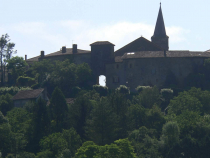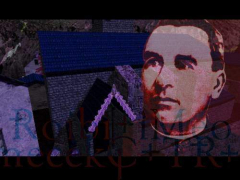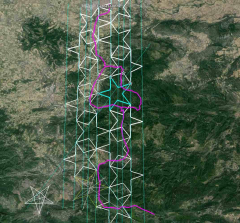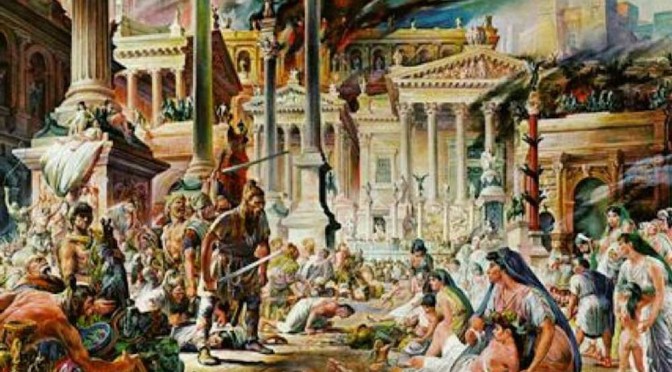Accidental Involvement

In 1355, The Black Prince’s invaded French held territory in the South of France and returned to Bordeaux “with a baggage train loaded with great wealth”.
In 2000, I carried out a literary review of all the information about this invasion, and followed it up with an extensive tour of the area he invaded. I became convinced that the “wealth” could not have come from the tiny villages he is credited with raiding.
In 1355, The Black Prince’s invaded French held territory in the South of France and returned to Bordeaux “with a baggage train loaded with great wealth”.
In 2000, I carried out a literary review of all the information about this invasion, and followed it up with an extensive tour of the area he invaded. I became convinced that the “wealth” could not have come from the tiny villages he is credited with raiding.
 I visited libraries in many towns. Ultimately in Limoux, which I had only visited to sample it’s splendid wine, I was told that if I was searching for a mysterious souce of wealth, for a great treasure, then I should go to Rennes-le-Château.
I visited libraries in many towns. Ultimately in Limoux, which I had only visited to sample it’s splendid wine, I was told that if I was searching for a mysterious souce of wealth, for a great treasure, then I should go to Rennes-le-Château.
Saunier
In Rennes I was introduced to the enigma of Abbe Saunier, the priest from this tiny hilltop village, who at the end of the nineteenth century became suddenly wealthy.
I became aware that his story had been told many times, most recently by members of a right wing French secret society whose main aim was to promote the interests of those they believed were descendants of the Merovingian kings.
Lincoln
 The story had then been picked up by British actor and scriptwriter Henry Lincoln. Lincoln came to believe that Sauniers story obscured the presence of “Sacred Geometry” in the hills and mountains around Rennes and a “Holy Ground” covering a much bigger area. Lincoln claims to have uncovered evidence of the biggest temple ever built.
The story had then been picked up by British actor and scriptwriter Henry Lincoln. Lincoln came to believe that Sauniers story obscured the presence of “Sacred Geometry” in the hills and mountains around Rennes and a “Holy Ground” covering a much bigger area. Lincoln claims to have uncovered evidence of the biggest temple ever built.
My own work was initially simply a repeat of everything Lincoln had documented. I wanted to make sure I understood his thinking and to see if I could define any different conclusions. The presentation of my findings is however very different to Lincoln’s and may have appeal for those who want a quick primer on the mysteries of Rennes.
Different Theories
Mid way through my own studies I parted company with Lincoln. His recent book concentrates on the “Holy Ground” and the temple whereas I became convinced that what I was looking at was the remnants of a complex navigation system.
 Lincoln came to believe that the treasure was concerned with information about Jesus Mary Magdelene, their children, and their place of burial. These theories were linked to the existence of a right wing secret society to form the basis of the plot of Dan Browne’s Da Vinci Code.
Lincoln came to believe that the treasure was concerned with information about Jesus Mary Magdelene, their children, and their place of burial. These theories were linked to the existence of a right wing secret society to form the basis of the plot of Dan Browne’s Da Vinci Code.
In contrast I became convinced that the treasure was physical, to be specific the Visigothic treasure stolen from Rome in 410 and last seen in Carcassonne in the early 7th century. when the Visigothic state was under attack by the Franks.
Alternative routes
I speculated on how the treasure might have been removed from Carcassonne by evaluating the strengths and weaknesses of the various alternative routes. I then superimposed on this a reconstruction of the navigation system, making sure that the system I proposed was practical enough to have been constructed on the ground with the tools available in visigothic times.
 The conclusions drawn from the work are simply staggering. The resulting information, when combined with Lincoln’s earlier work offers a viable solution to the location of the Visigothic Treasure.
The conclusions drawn from the work are simply staggering. The resulting information, when combined with Lincoln’s earlier work offers a viable solution to the location of the Visigothic Treasure.
The latter half of these pages are sealed as they reveal the location of the treasure. However I will open them to anyone who provides me with a signed confidentiality agreement.
I am looking for partners to take part in adventure to recover the treasure and I believe that when you see the outcomes, you will be convinced that a great adventure does, in fact, await!

